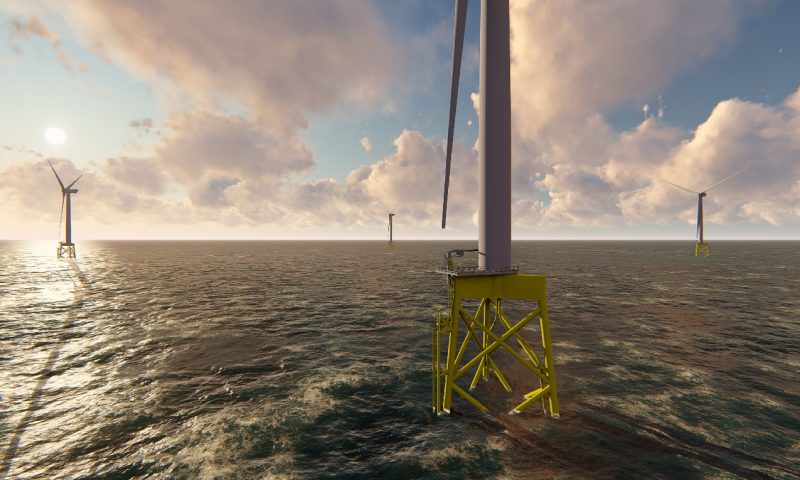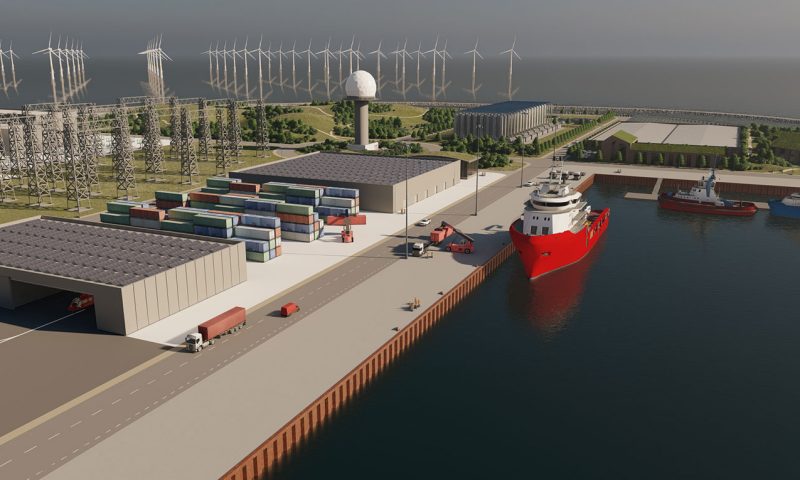
Ramboll’s True Digital Twin Demonstrates its Offshore Potential
A pilot-test of Ramboll’s True Digital Twin technology at the Wikinger offshore wind farm has revealed a significant analytical potential to increase lifetime of offshore wind. The pilot-test is part of the ROMEO project, an initiative supported by the EU research programme Horizon 2020 that aims at advancing the energy transition in Europe and reduce the costs of offshore wind energy.
Ramboll has reached an impressive milestone in the ROMEO project, demonstrating the great potential of its innovative True Digital Twin technology through a pilot-test that has been conducted at the Wikinger offshore wind farm in the Baltic Sea. The pilot-test – based on a measurement campaign using Structural Health Monitoring (SHM) solutions – revealed a significant potential for lifetime extension for the offshore substation and the offshore wind turbine foundations.
“Our goal with this project is to demonstrate the feasibility and impact of data-driven O&M strategies by having the True Digital Twin continuously deliver instantaneous insights on the physics of the assets that are being monitored. The results from this pilot-test are stunning, revealing significant potential for lifetime extension and cost reductions in operating and maintaining offshore wind structures”, says Ursula Smolka, Lead Consultant Asset Management Wind, Ramboll.
Demonstrating how advanced technology and machine learning can replace traditional monitoring methods
The results of the pilot-test have been summarised in two reports which Ramboll has delivered to its ROMEO project partners. According to the reports, the full power of a True Digital Twin lies within the continuous monitoring of the factors that can affect the structural integrity of a wind turbine over its entire lifetime. The monitoring process can be done at all possible locations using SHM solutions, cloud computing and advanced mathematical calculations.
Based on only a few sensors at easily accessed locations, the patterns of movements are captured to let the True Digital Twin undergo the full history of loads. The True Digital Twin can detect structural integrity issues like failure of jacket braces, excessive scour or corrosion. Extensive simulation studies showed that monitoring modal properties like natural frequencies and mode shapes not only can detect anomalies but can also identify the type of anomaly if combined with a design model database.
“The concept of the True Digital Twin makes detailed design models available for predicted lifecycle management and provides the framework to incorporate measurement findings of a specific turbine into the simulation world. We can track the history of exposure of an individual structure or detect damages and replace the extensive instrumentation of traditional methods with mathematical calculations”, explains Ursula.
Ramboll has also demonstrated how fatigue can be monitored at all possible locations of the structure while keeping the costs low using the innovative modal decomposition and expansion algorithm. A verification study has confirmed that damage equivalent loads matched well with loads estimated with the conventional strain gauge approach.
Not all wind turbines in an offshore wind farm may be equipped with dedicated sensors for SHM, but operational data such as 10-minute statistics from the wind turbine’s SCADA system are usually available throughout the farm. These data can be a valuable source of information for quick decision support if combined with machine learning approaches. Analysis confirmed that fatigue accumulation can be estimated after a training period in which the knowledge about fatigue is taken from another source, for example a temporary strain measurement campaign. Potential has been also identified in detecting structural integrity issues through machine learning approaches and the low frequency data.
Potential for reducing human offshore time and visits
Mark Paine, Offshore Asset Integrity Manager at Iberdrola Renewables and one of ROMEO project partners also recognises the potential of True Digital Twin:
“The benefits of the True Digital Twin are very clear to us and this pilot-test has now reinforced our initial expectations. Ramboll has made great progress in the ROMEO project and we look forward to collaborating with them during the next phases of the project looking at the potential of reducing human offshore time and number of offshore visits”.
During the next phases of the ROMEO project, Ramboll and its partners will continue exploring the added value of continuously monitoring offshore wind structures. The project partners anticipate a reduction of human offshore time for annual inspections and a reduction in the number of planned time base offshore visits.













